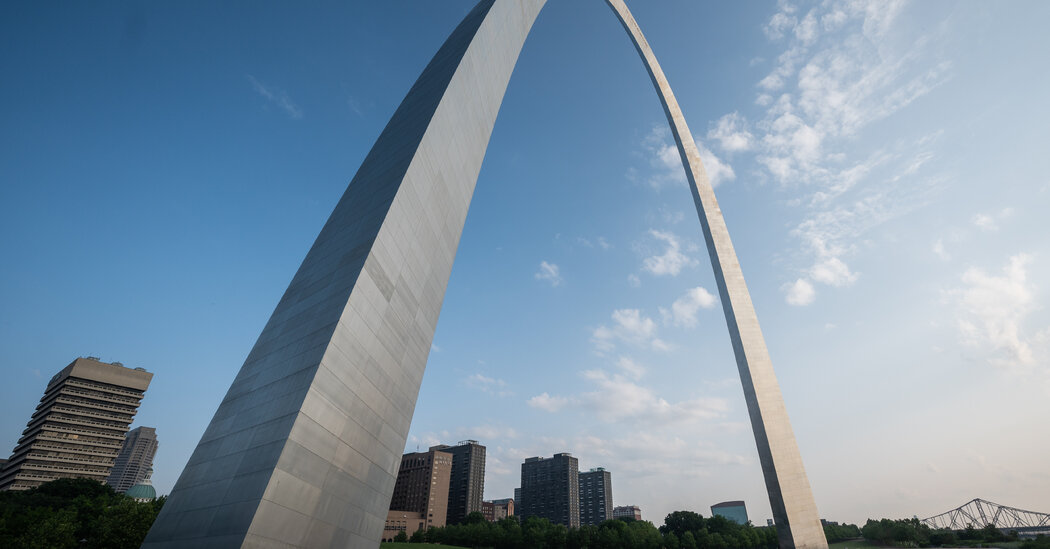A few hundred yards from the entrance to CityPark, the splashy new soccer stadium in downtown St. Louis, another urban landmark looms: a cluster of hour-glass-shaped sculptures called “Pillars of the Valley,” by the local artist Damon Davis, that pays tribute to some 20,000 residents of a Black community that was forced from this location in 1959 to make way for a freeway. Standing amid its pillars on a recent afternoon, I leaned in close to read a former resident’s inscription in the stone: “What we lost in the destruction of our Mill Creek Valley neighborhood was a community we relied on to survive.”
Pillars of the Valley is one of several sites on the new Brickline urban walking trail, or “greenway,” that highlights the city’s Black presence. St. Louis loves its greenways. Two decades ago, voters passed a one-tenth-of-a-cent sales tax to create a special agency, Great Rivers Greenway, that would create these shared recreational pathways in order to make the St. Louis area “a more vibrant place to live, work and play.”
But Brickline, the agency’s latest brainchild, is as much a greenway as a public reckoning of the city’s racist history — and its impact on Black residents today. A work in progress, the Brickline’s creation was shaped, in part, by the 2014 riots in nearby Ferguson, Mo., and the police shooting of Michael Brown. When it is finished in 2030, 10 miles of new trails will connect 14 mostly Black St. Louis-area neighborhoods.
On a warm spring afternoon, I checked out the two-mile completed section of the Brickline, this portion a straight shot from the intersection of Market Street and 22nd Street to the riverfront’s iconic Gateway Arch.
At the beginning of your walk, it’s worth lingering at the “Pillars of the Valley” installation, which humanizes abstract tales of the mid-20th-century’s federal urban renewal program. As the writer Walter Johnson puts it in “The Broken Heart of America,” his book about the city’s racial politics: “History in St. Louis unfolded at the juncture of racism and real estate.”
Freeman’s statue sits in the shadow of the Old Courthouse, the site of the landmark Dred Scott court case in which the Supreme Court ruled in 1857 that Black people were not entitled to citizenship. The Old Courthouse and the surrounding area is currently undergoing a major renovation, which at $380 million is billed as the largest public-private partnership in the history of the National Park…
Click Here to Read the Full Original Article at NYT > Travel…
